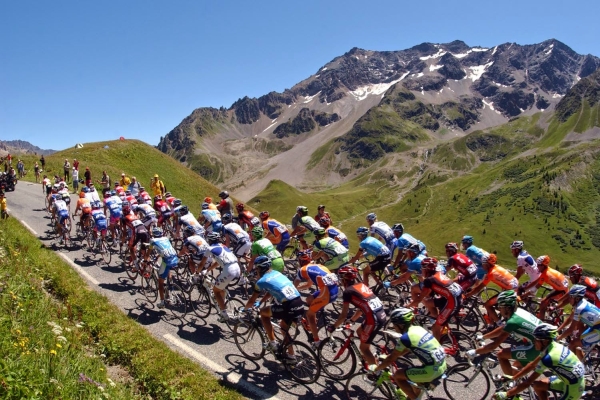Published on the 21/07/2015 | Written by Donovan Jackson

198 riders form mesh network broadcasting data to the world…
This year’s Tour de France cycling race, presently playing out in Europe, is remarkable for its full blown adoption of enterprise technology. Not only has Dimension Data networked the peloton and made data available to the world + dog, but even some of the more sinister aspects are coming to the fore: the personal training data of the race leader is rumoured to have been hacked or leaked.
Describing its networking of the 198 cyclists who started the race in Utrecht on 4 July, Dimension Data’s NZ national sales manager Phil Goodwin said each rider has a transmitter fitted to their bike which communicates with the other nearby devices. “Each tracker sends information to the other riders, then to a vehicle following, which then relays it to the helicopter which sends it to the communications station which is located at the end of each stage.”
That information is made available live for media, friends and family and fans to keep a closer eye on what’s happening on the road in what is the world’s biggest live sporting event.
“We’ve got a ‘Big Data truck’ following the race which consolidates all the data collected and pushes it into the cloud via fibre optics,” said Goodwin; “The processing power of the truck and cloud sources crunch the data to produce real time, live info for the fans.”
The problem for fans in New Zealand and Australia is that racing takes place in the wee hours of the morning.
As for what data is made available, Goodwin said it is a range of metrics, such as speed and relative speed, times on ascents, positioning data, and more.
However, professional cyclists and their staff are known to be cagey around information sharing. That’s apparent in the suspected hack or leak of the ‘power files’ of race leader Christopher Froome, of Team Sky. Professional cyclists today record their power output using bike mounted computers; this information provides an indication of ability and fitness. It can also be used as a marker for ‘superhuman’ performances – professional cycling is notorious for cheating, through the use of steroids and other banned substances, with even ‘motorised doping’ being suspected.
Goodwin said real time insights provide an information layer which provides more perspective and involvement for fans around the world. Asked why it is characterised as a ‘big data’ solution, he said it is the ‘share factor and real time sampling that translates it into a big data challenge’. “There are something like 75 million GPS readings alone and you’ve got a network of nearly 200 riders moving through some of the most remote parts of Europe. It has some really challenging aspects, particularly in terms of delivering real time insights from a large and rapidly changing data set.”
The experience of dealing with information velocity in the field, Goodwin added, is just as applicable to business as it is to sport. “Analytics tends to be retrospective. By applying analytics ‘now’, the power to enable better decision making in business is a lesson coming out of this Tour de France which will be invaluable in a commercial sense.”
While figures on the numbers of users of the live tracking site aren’t immediately available, the expectation is that the real time data will be accessed by some 17 million viewers with up to 2000 page requests per second. In an earlier statement, the company said data on the riders is processed in Dimension Data’s cloud platform across five continents and consumes over 350 000 000 CPU cycles per second.
Check out Dimension Data’s real time tracking of the Tour de France.




























Thanks for the comment Ken. I did ask Phil just that – what value does the data have beyond the Tour. He said it is a proof of concept, more than anything else, which will provide lessons for applications in commercial scenarios.
On the trackers themselves and aerodynamics: the Tour and other major races have long mandated tracking devices of some sort. Every rider has the same device on their bike, so that levels the playing field, so to speak. In this instance, the tracker was tucked behind the saddle, so very much in the immediate slipstream of each individual rider.
It will be interesting to see if this continues and what other races it might be used for.
I seems really strange to me that so much goes into aerodynamics yet the race organisers got agreement from all teams to add these transmitters to the bikes.
Be interesting to understand the ROI for Dimension Data too – it’s huge investment and I can’t see any use for the data after the Tour.